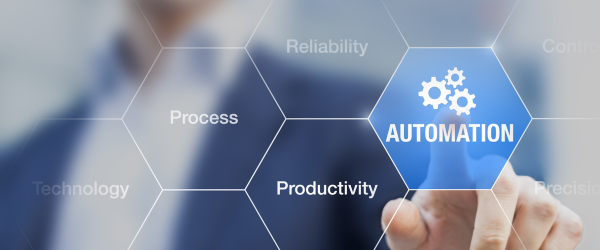
Today’s announcement from Blue Prism covers new product capabilities, new service and design support services, and a new go-to-market framework that underscores the importance of automation as a means to enable legacy organizations to compete with 'born-digital' startups. Blue Prism’s announcement is equal parts perspective, product, and process. Let’s examine each in turn.
Perspective
The perspective Blue Prism is bringing to the table today is the notion of empowering digital entrepreneurs within an organization (under the flag ‘connected RPA’) with the intent of either disruption-proofing that organization or at least enabling self-disruption as part of a deliberate strategy.
In Blue Prism’s view, this is best accomplished through a package of three organizational automation design concepts. The first is the federation of the center of excellence concept – which is not to say that existing CoEs are obsolete, but rather now serve as a lighthouse for other disciplinary CoEs within, for example, finance, production, and customer care. Pushing more organizational automation authority and responsibility outward into the organization, in Blue Prism’s view, enables legacy organizations to begin acting more like ‘born-digital’ disruptors.
The second such principle, enabled by the first, is the concept of significantly accelerating the process of moving from proof of concept to at-scale testing to enterprise deployment. Again, the company positions this as a means to emulate born-digital firms and build both proactive and reactive organizational change speed through rapid automation technology deployment.
And third, Blue Prism is emphasizing the value of peer-to-peer interaction among organizational automation executives, a plank of its strategy that is being served through the rollout of Blue Prism Community – an area in Blue Prism Digital Exchange for sharing best practices and collaborating on automation challenges.
Product
The product announcements supporting this new go-to-market perspective include a process discovery capability, which will be available on the Blue Prism website. For those readers who recall seeing Blue Prism announce a partner relationship with Celonis in September of 2018, this may come as a surprise, but the firm has every intention of maintaining that relationship; this new software offering is intended as a lighter process exploration tool with the ability to visualize and contextualize process opportunities.
Blue Prism is careful to distinguish here between process discovery – the identification of processes representing a good fit for automation – and process mining, a deeper capability offered by Celonis that includes analysis of the specific stepwise work done within those processes.
Blue Prism also announced today the availability of its London-based Blue Prism AI Research Lab and accompanying AI roadmap strategy, which focuses on three areas: understanding and ingesting data in a broader variety of formats, simplifying automation design, and improving the relationship between humans and digital workers in assisted automations.
In addition, in an effort to put its expanded product set in the hands of more organizations, Blue Prism is also going to open up access to the company’s RPA software making it easy for people to get started, learn more, and explore what’s possible with an intelligent digital workforce.
Process
Finally, the process of engaging Blue Prism is changing as well. The company has established, through its experience in deployments, that the early stages of organizational automation initiatives are critical to the long-term success of such efforts, and has staged more support services and personnel into this period in response. Far from being a rebuke of channel partner efforts, this packaged service offering will actually increase the need for delivery partner resources ‘on the ground’ to service customers’ automation capabilities.
Blue Prism’s own customer success and services organization will offer to provide Blue Prism expertise into the customer programs through a series of pre-defined interventions that complement and augment the customers’ and partners’ efforts. The offering, entitled Success Accelerator, is designed around Blue Prism’s Robotic Operating Model (ROM), the company’s design and deployment framework. The intent of this new product is accelerating and accentuating client ROI by establishing sound automation delivery principles based on lessons Blue Prism has learned in its deployment history to date.
Summary
Blue Prism’s suite of product, process and perspective announcements today underscore an emerging trend in the sector – namely, the awareness that automation offers real improvements in organizational speed and agility, two characteristics that will be important for legacy organizations to develop if they are to compete with fast, reactive, born-digital disruptive startups.
The connected RPA vision that Blue Prism has outlined highlights the evolving power of automation. It extends beyond the limits of traditional RPA, giving users a compelling automation platform which includes AI and cognitive features. Furthermore, the new roadmap, capabilities, and features being introduced today enable Blue Prism’s growing community of developers, customers, channel partners, and technology alliances.
]]>
2017 brought a surge of RPA deployments across industries, and in 2018 that trend has accelerated as more and more firms begin exploring the many benefits of a digital workforce. But even as some firms are just getting their RPA projects started, others are beginning to explore the next phase: cognitive automation. And a common challenge for firms is the desire to begin planning for a more intelligent digital workforce while automating simpler rule-based processes today.
Having spoken with organizations at different stages of their journeys from BI to RPA and on to cognitive, there are tasks that companies can begin during RPA implementation to ensure that they are well positioned for the machine learning-intensive demands of cognitive automation:
Design insight points into the process for machine learning
Too often, the concept of STP gets conflated with the idea of measuring task automation only on completion. But for learning platforms, it is vital to understand exactly where variance and exceptions arise in the process – so allow your RPA platform to document its progress in detail from task inception to task completion.
At each stage, provide a data outlet to track the task’s variance on a stage-by-stage basis. A cognitive platform can then learn where, within each task, variance is most likely to arise – and it may be the case that the work can be redesigned to give straightforward subtasks to a lower-cost RPA platform while cognitive automation handles the more complex subtasks.
Build a robot with pen & paper first
One of the basic measures for determining whether a process can be managed by BPM, by RPA, or by cognitive automation is the degree to which it can be expressed as a function of rigorous rules. So, begin by building a pen-and-paper robot – a list of the rules by which a worker, human or digital, is expected to execute against the task.
Consider ‘borrowing’ an employee with no familiarity with the involved task to see if the task is genuinely as straightforward and rule-bounded as it seems – or whether, perhaps, it involves a higher order of decision-making that could require cognitive automation or AI.
Use the process to revisit the existing work design
In many organizations, tasks have ‘grown up’ inorganically around inputs from multiple stakeholders and have been amended and revised on the fly as the pace of business has demanded. But the migration first to RPA and then on to cognitive automation is a gift-wrapped opportunity to revisit how, where, and when work is done within an organization.
Can key task components be time-shifted to less expensive computing cycles overnight or on weekends? Can whole tasks be re-divided into simpler and more complex components and allocated to the lowest-cost tool for the job?
Dock the initiative with in-house ML & data initiatives
Cognitive automation does not have to remain isolated to individual task areas or divisions within an organization. Often, ML initiatives produce better results when given access to other business areas to learn from. What can cognitive automation learn about customer service tasks from paying a ‘virtual visit’ to the manufacturing floor via IoT? Much, potentially – especially if specific products or parts are difficult to machine to tolerance within an allowed margin of error, they may be more common sources of customer complaints and RMAs.
Similarly, a credit risk-scoring ML platform can learn from patterns of exception management in credit applications being managed in a cognitive automation environment. For ML initiatives, enabling one implementation to learn from others is a key success factor in producing ‘brilliant’ organizational AI.
Revisit the organizational data hygiene & governance models
Data scientists will be the first to underscore the importance of introducing clean data into any environment in which decision-making will be a task stage. Data with poor hygiene, and with low levels of governance surrounding the data cleaning and taxonomy management function, will create equally poor results from cognitive automation technology that utilizes it to make decisions.
Cognitive software is no different than humans in this respect; garbage in, garbage out, as the old saying goes. As a result, a comprehensive visitation of organizational data hygiene and governance models will pay dividends down the road in cognitive work.
Discuss your vendor’s existing technology & roadmap in cognitive & AI
Across the RPA sector, cognitive is a central concept for most vendors’ 2018-2020 roadmaps. Scheduling a working session now on migrating the organization from RPA to cognitive automation provides clients with insight on their vendor’s strengths and capability set. It also enables vendors to get a close look at ‘on the ground’ cognitive automation needs in different organizational task areas.
That’s win/win – and it helps ensure that an existing investment in vendor technology is well-positioned to take the organization forward into cognitive based on a sound understanding of client needs.
NelsonHall conducts continuous research into all aspects of RPA and AI technologies and services as part of its RPA & Cognitive Services research program. A major report on RPA & AI Technology Evaluation by Dave Mayer has just been published, and coming soon is a major report on Business Process Transformation through RPA & AI by John Willmott. To find out more, contact Guy Saunders.
]]>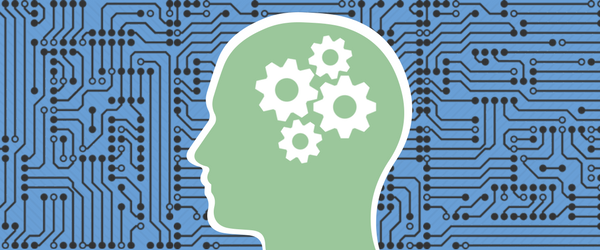
With every new software release from RPA sector leaders, there is always much to be excited about as vendors continue to push the technological boundaries of workplace automation. Whether those new capabilities focus on cognition, or security, or scalability, the technology available to us continues to be a source of inspiration and innovative thinking in how those new capabilities can be applied.
But success in an RPA deployment is not entirely dependent just on the technology involved. In fact, the implementation design framework for RPA is often just as important – if not more so – in determining whether a deployment is successful. Install the most cutting-edge platform available into a subpar implementation design framework, and no amount of technological innovation can overcome that hindrance.
With this in mind, here are seven tasks that should be part of any RPA implementation plan before organizations put pen to paper to sign up with an RPA platform vendor.
Create a cohesive vision of what automation will achieve
Automation is the ultimate strict interpretation code: it does precisely as it’s told, at speed, and in volume. But it must be pointed at the right corporate challenges, with a long-term vision for what it is (and is not) expected to do in order to be successful in that mission. That process involves asking some broad-ranging questions up-front:
- What stakeholders are involved – internally and externally – in the automation initiative?
- What are our organization’s expectations of the initiative?
- How will we know if we succeeded or fail?
- What metrics will drive those assessments?
- Where will this initiative go next within our organization?
- Will we involve our supply chain partners or technology allies in this process?
Ensure a staff model that can scale at the speed of enterprise automation
We tend to spend so much time talking about FTE reduction in the automation sector that we overlook the very real issue of FTE sourcing (in volume!) in relation to the implementation of automation at enterprise scale. Automation needs designers, coders, project managers, and support personnel, all familiar with the platform and able to contribute new code and thoughtware assets at speed.
Some vendors are addressing this issue head-on with initiatives like Automation Anywhere University, UiPath Academy, and Blue Prism Learning and Accreditation, and others have similar initiatives in the works. It is also important that organizational HR professionals be briefed on the specific skillsets necessary for automation-related hires; this is a relatively new field, and partnering up-front on talent acquisition can yield meaningful benefits down the road.
Plan in detail for a labor outage
The RPA sector is rife with reassurances about digital workers: they never go on strike; they don’t sleep or require breaks; they don’t call in sick. But things do go wrong. And while the RPA vendors offer impressive SLAs with respect to getting clients back online quickly, sometimes it’s necessary to handle hours, or even days, of automated work manually. Having mature high-availability and disaster recovery capability built into the platform – as Automation Anywhere included in Enterprise Release 11 – mitigates these concerns to a specific degree, but planning for the worst means just that.
Connect with the press and the labor community
Don’t skip this section because it sounds like organized labor management only, although that’s a factor too. Automation stories get out, and local and national press alike are eager to cover RPA initiatives at large organizations. It’s a hot-button topic and an easily accessible story.
Unfortunately, it’s also all too easy to take an automation story and run with the sensationalist aspects of FTE displacement and cost reduction. By interacting with journalist and labor leaders in advance of launching an automation initiative, you’re owning the story before it can be owned elsewhere in the content chain.
Have a retraining and upskilling initiative parallel to your automation COE
Automation can quickly reduce the number of humans necessary in a work area by half or even more. What is your organization’s plan for redeployment of that human capital to other, higher-value tasks? Who occupies those task chairs now – and what will they be doing?
Once the task of automation deployment is complete, there is still process work to be done in finding value-added work for humans who have a reduced workload due to automation. Some organizations are finding and unlocking new sources of enterprise value in doing so – for example, front-line workers who have their workloads reduced through automation can often ‘see the forest’ better and can advise their superiors on ways to streamline and improve processes.
Similarly, automation can bring together working groups on tasks that have connected automations between departments, allowing for new conversations, strategies, and processes to take shape.
Have an articulation plan for RPA and other advanced technologies
RPA and cognitive automation do more than improve the quality and consistency of work – they also improve the quality and consistency of task-related data. That is an invaluable characteristic of RPA from the organizational data and analytics perspective, and one that is often overlooked in the planning process.
While it might take days for a service center to spot a trend in common product complaints, RPA platforms could see the same trend in hours, combine that data in an organizational data discovery environment with IoT data from the production line, and identify a product fault faster and more efficiently than a traditional workforce might. When designing an automation initiative, it is vital to take these opportunities into account and plan for them.
Create a roadmap to cognitive automation and beyond
RPA is no more a destination than business rules engines were, or CRM, or ERP. These were all enabling technologies that oriented and guided organizations towards greater levels of agility, awareness and capability. Similarly, deploying RPA provides organizations with insight into the complexity, structure and dependencies of specific tasks. Working towards task automation yields real clarity, on a workflow-by-workflow basis, of what level of cognition will be necessary to achieve meaningful automation levels.
While many tasks can be achieved by current levels of vendor RPA capability, others will require more evolved cognitive automation, and some will be reserved for the future, when new AI capabilities become available. By designating relevant work processes to their automation ‘containers’, an enterprise roadmap to cognitive automation and AI begins to take shape.
]]>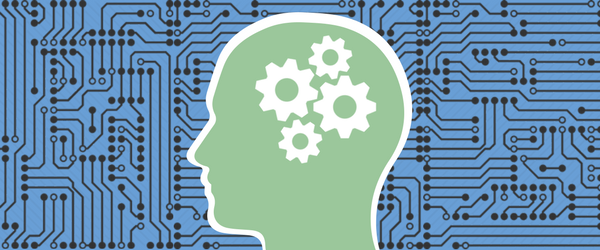
The RPA sector is defined as one of rapid technological evolution, and every year it seems like what we thought to be bleeding-edge capability in January turns out to be proven and deployed technology long before year’s end. With this rapid pace of growth and maturation in mind, where might the RPA sector be by the end of 2018? Here are seven predictions.
The first wave of automation-inclusive UI design
To date, RPA has been adaptive in nature – automation software has done the interpretive labor to ‘see’ the application screen as humans do. But as more and more repetitive-task work becomes automated, software designers will begin taking the strengths and weaknesses of computer vision into account in designing applications that will be shared between human and digital workers. This will show up in small ways at first, particularly in interface areas that are challenging for RPA software to learn quickly, but over the course of 2018, ‘hybrid workforce UI design’ will become a new standard for enterprise software vendors.
Process mining makes RPA more accessible for midmarket & emerging large market segments
Early adopters of RPA have already established that detailed process mapping is key to successful task automation across the extended enterprise. For Fortune 1000 firms, that can be fairly straightforward, with retained consulting and systems integration partners on hand to assist in the process of mapping task flows for RPA implementation. Smaller firms, however, don’t always have the luxury of engaging large consulting firms to assist in this process – so vendors developing their own automated process mapping technology, or partnering with third-party providers like Celonis, will find demand booming in the midmarket.
Human skill bottleneck hits providers without education/certification plans
It’s ironic that human skill capital will end up as the limiting factor in the growth rate of successful RPA implementations, but 2018 will close with a clear shortage of qualified automation designers and deployment management professionals. Those organizations (like UiPath, Blue Prism, and Automation Anywhere) that saw this coming early on and established academic settings for the education and certification of on-platform skilled practitioners, will thrive. But those lacking these programs may find themselves in a skill bottleneck in the market – one that will begin to materially inhibit growth.
RPA becomes a designed-in factor for disruptors
In conversations I had with organizations implementing RPA during 2H17, one common factor came to the fore: that their initial FTE rationalization gains had already been realized, and going forward, they were looking to RPA as a means to manage significant growth in their operations.
For organizations coming to market as disruptors, this trend is even more pronounced, and organizations with designs on being disruptive forces are increasingly building automation capabilities into their growth plans from the ground up. Building an organization on a foundation of a hybrid human-digital workforce is a different endeavor entirely from retrofitting an existing company with automation – and as a result, we should begin seeing some real innovation in organizational design beginning this year.
Japan becomes the adoption template geo for big bets
To date, Japan has produced some of the largest implementations of RPA, with UiPath’s late 2017 deployment at SMBC pushing the envelope still further. Japan is betting big on RPA to become a sustainable source of competitive differentiation, and as more large organizations there implement large-scale RPA projects, the best practices library for RPA deployment at scale will expand in kind.
Companies worldwide looked to Japan for guidance in implementing robotics once before, during the rise of robotic manufacturing in the automotive sector. 2018 will see a second such wave.
RPA proves its case as a source of compliance gains
RPA has been marketed with a number of different value creation characteristics already, with the obvious cost reduction and quality improvement factors taking center stage. But RPA has significant benefits to offer organizations in regulated industries, most notably in the ability to secure access to sensitive information, systematize the process of accessing and modifying that information, and standardizing the documentation process and audit logging work associated with it.
2018 will be the year that organizations begin to see meaningful returns from adopting RPA as a solution to compliance task challenges.
Demand for specialist implementation navigators grows significantly
RPA implementation has been a partnered endeavor since the technology first arrived on the scene, with software vendors allying themselves closely with large consulting firms and systems integrators to optimize their client deployments. But demand is emerging for focused, automation-centric services, and right on time, the industry is seeing a surge of new RPA specialist service providers like Symphony and Agilify.
As buying organizations begin to ask more of their new – or revamped – RPA implementations, demand for these providers’ services will grow swiftly during 2018.
]]>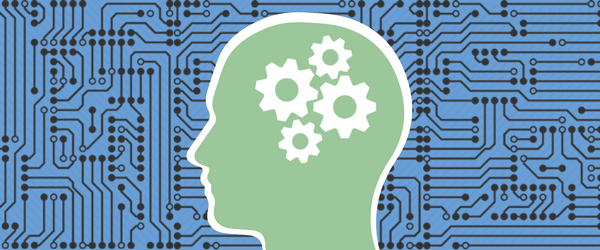
At the Intelligent Automation (IA) event in New Orleans, December 6-8, snow in the Big Easy air was not the only surprise. As expected, there was plenty of technological innovation on show in the exhibition hall, but the event also played host to some energized discussions on human-centric gains to be realized from RPA implementation – suggesting that we are indeed moving into the next phase of considering automation holistically in the enterprise.
Specifically, many presentations and conversations shared a theme of human enablement within the enterprise – positioning the organization for greater long-term success, rather than focusing on the short-term fiscal gains of reductions in force and reduced cost to serve specific processes. Here are four automation gain frameworks I took away from the event that are focused on areas other than raw FTE reduction.
Automation as a disruption buffer
‘Disrupt or be disrupted’ has become a mantra for many change management executives across industries, and it was invoked numerous times during the IA event in relation to automation’s role as a buffer to disruptive change – in both directions. An automated workforce can quickly scale up (or down) as needed without costly and time-consuming facility management and workforce rationalization tasks. While there was some discussion regarding the downside containment role of RPA, far more participants at the event were looking to RPA as a tool to effectively manage explosive growth in their sectors
Automation as a ‘hazmat bot’
The idea of using bots to handle sensitive processes and data emerged as a strong theme for the near-term RPA sector roadmap. Where bots were actually less trusted with ‘low-touch’ environment data in highly-regulated industries, like BFSI and healthcare, the dialog is beginning to turn in favor of sending bots to touch and manipulate that data rather than humans.
The rationale is sound: bots can be coded with very narrowly-defined rights and credentials, self-document their own work without exception, and produce their own audit trails. Expect to see this trend gain steam in 2018 and beyond. ‘We send bots into nuclear reactors and onto other planets,’ one attendee told me. ‘We treat the data core in card issuance with no less of a hazmat perspective – where we can minimize human contact, we will, for everyone's benefit.'
Automation as a workflow stress diagnostic
The very process of automating workflows within the organization produces a wealth of usable data, and nowhere is that more evident than in analyzing those workflows for exception management stress points. In a given workflow, there are usually clearly defined and straightforward task components, and those that produce more than an average volume of exceptions. By mapping these workflows and using them to understand similar tasks in other areas of the organization, companies can leverage automation data to identify those phases of a workflow that are creating exception management stress for employees, and add support via process redesign, digitization, or assisted automation.
Automation as human capital churn ‘coolant’
Related to the previous point is the idea that RPA is beginning to serve as a very real source of ‘coolant’ for burnout-prone repetitive task areas in the organization by continuously separating work into automation-relevant and human-relevant. Eliminating the most burnout-causing task stages from the human workday reduces the proclivity for turnover and the total cost to the organization of managing the human side of the workforce.
Summary
Productivity, quality, and fiscal gains are often the first three topics of conversation when organizations discuss launching an RPA initiative. But automation has much more to offer, not only to the organizational bottom line, but to the human employees in the enterprise as well. As this sector’s technology offerings evolve and mature, so too do the use cases and benefit frameworks within customer organizations.
]]>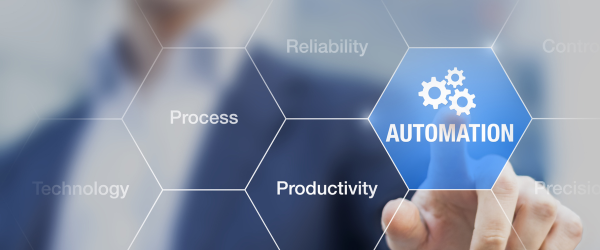
RPA software offers users the tantalizing possibility of being able to simply 'hit record and go' at the beginning of an enterprise automation initiative. But organizations that are seeing the greatest returns are slowing the initial process down, and framing their initiatives as they would treat any major technology migration.
At UIPath’s recent User Summit in New York City, one of the hottest topics was the right pace of RPA implementation, with UIPath’s customer and partner panels devoting a considerable amount of time to the topic. And the message was clear: RPA is a technology that encourages an implementation rate faster than the customer might want to sign up for.
That very idea is a strange one for most veteran IT and business executives, who are used to IT project implementations going slower than expected, with fiscal returns further in the future than they might have hoped. So when a technology like RPA does come along that promises to enable users to ‘hit record and go’, why shouldn’t beleaguered line of business heads take those promises at face value and get moving with automation today? After all, automation is often part of a larger digital transformation initiative, with expectations that projects will be self-funding through savings. Shouldn’t technologies, like RPA, that generate material cost reductions be implemented as quickly as possible?
It’s a fair question. But there are four simple reasons why RPA projects should still be managed in a stepwise fashion, like any other IT or business project:
- Technical debt mounts quickly in too-quick RPA implementations. The ‘hit record and go’ philosophy might offer some minimal return in a short period of time, but federating the automation creation process means that multiple users often create similar automations for similar tasks, wasting time and resources consumed later in consolidating different versions of the same robot down to a single bot. In addition, individual users often create related-task bots based on their original automation scripts, multiplying the task of bot consolidation later. Often, organizations find that they have to start over completely, and only then do they undertake a more formal approach
- Installing RPA through a traditional project framework brings stakeholders together. Automation is a technology that has the potential to bring IT and business stakeholders together in an enterprise service delivery partnership – or drive them apart with turf battles and finger-pointing. Establishing rules up front for which business units should be involved in automation design, which in automation coding, which in automation governance, and which in automation innovation establishes ground rules that all parties involved can respect and buy into for the long term, avoiding larger-scale conflict that can emerge when the process is entered into too quickly up front
- Designing for scale demands both innovation and centralization. As automation demand scales both in terms of breadth of services within the organization and the number of workers involved, the need for centralization of automation design and deployment increases commensurately. Innovation can actually proceed faster in many organizations being managed from a CoE or automation ‘lighthouse’ than through trial and error at the desktop level. Add in the additional demands on automation systems that result from global organizations demanding localized automations and in-language service, and that scale factor becomes a critical component in achieving peak fiscal return from an RPA initiative
- Most RPA providers rely on integration partners for ‘right-speed’ deployment and support. Across the RPA sector, strong partnerships have evolved between RPA software developers and major integrators and consulting service providers, and for good reason – the latter bring experience in change management, process design, and implementation at scale to the former’s technological innovations. This has quickly become a proven combination, and one that is returning significant fiscal and operational value to enterprise-scale organizations. Short-circuiting that value return chain by cutting partner perspective and capability out of the equation might again save some dollars and time in the short run, but will end up being more costly as RPA is scaled up.
RPA presents IT and business leaders with an alluring combination of immediacy of access, significant potential fiscal returns, and low to non-existent stack requirements on deployment. Organizations that have jumped into the deep end of enterprise automation from the ‘hit record and go’ perspective might see some immediate fiscal returns, but ultimately, they are selling short the full promise of professionally-managed automation projects executed in partnership between lines of business and IT. Providers like UIPath that are emphasizing speeding up implementation are doing so with a structured framework in mind – so that once the process is designed for scale, and implementation rules and procedures are put in place, the actual software component of the solution can proceed into deployment as quickly as possible.
But in the end, a few additional weeks or even months spent in up-front work can better enable enterprise-level organizations to achieve their peak automation return. Moreover, this approach saves costly rework and redesign stages that inevitably stretch a ‘hit record and go’ implementation out to the same project timeline, or often much longer, than a more structured approach. As strange as it may sound, the best practices in RPA deployment involve slowing down… in order to go faster.
]]>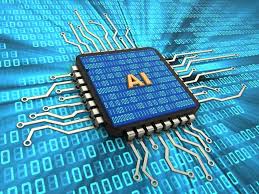
Nvidia faces stiff new competition for the leadership position in the AI processing chip market. But the firm has a significant competitive advantage: a culture of innovation and production efficiency that was developed to address the demanding needs of a wholly different market.
Intel and Google have been making waves in the AI processing chip market, the former with the acquisitions of Nervana Systems and Mobileye, the latter with the new Tensor Processing Unit (TPU) announcement. Both are moves intended to compete more directly with Nvidia in the burgeoning market for AI processing chips.
James Wang of investment firm ARK recently set forth his long-term bet on the industry – and it favors Nvidia. Wang posits that products like TPU will be less efficient than Nvidia GPUs for the foreseeable future, arguing that “…until TPUs demonstrate an unambiguous lead over GPUs in independent tests, Nvidia should continue to dominate the deep-learning data center.”
Wang is right, but his opinion may not actually go far enough in explaining why Nvidia should enjoy a sustainable advantage over other relative newcomers, despite their resources and experience in chipbuilding. That advantage, by the way, doesn’t have a thing to do with Google’s chip fabrication expertise, or Intel’s understanding of the needs of the AI market. It’s a deeper factor that’s seated firmly in Nvidia’s culture.
Cutting-edge engineering & savvy pricing: key strengths forged in the gaming cauldron
By the time 2017 dawned, Nvidia owned just over three-quarters of the graphics card segment (76.7%), compared with main competitor AMD’s one-quarter (23.2%). But that wasn’t always the case. In fact, for much of the past decade, Nvidia held an uncomfortable leadership position in the marketplace against AMD, sometimes leading by as few as ten points of market share (2Q10).
During that time, Nvidia understood that a misstep against AMD in bringing new products forth could yield the market leader position, and even send the company into an unrecoverable decline if gamers – a tough audience to say the least – lost confidence in Nvidia’s vision.
As such, Nvidia learned many of the principles of design thinking the hard way. They learned to fail fast, to find new segments in the market and exploit them – as they did with the GTX 970, a product that stunned the marketplace by being priced underneath its predecessor at launch – and to take and hold ground with innovation and rapid-cycle development. More importantly, they learned how to demonstrate value to a gamer community that wanted to buy long-term performance security when it was time for a hardware refresh. In short, they learned to understand the wants and needs of an extraordinarily demanding consumer public, in the form of gamers, and relentlessly squeezed their competition out with a combination of cutting-edge engineering and savvy segment pricing.
Much of the real-world output from that cultural core of relentless engineering improvement is the remarkable pace of platform efficiency that Nvidia has achieved in its GPU chips. The company maintained close ties with leading game publishing houses, and as a result kept clearly in mind what sort of processing speed – as well as heat output and energy draw – cutting-edge games were going to require. At multiple points in time, the standards for supporting new games have meaningfully advanced inside eighteen months. This often mandated that Nvidia turn over a new top-end GPU processing platform on a blistering production timeline.
In response, Nvidia turned to parallel computing, an ideal fit for GPUs, which already offered significantly more cores than their CPU cousins. As it turned out, Nvidia had put itself on the fast track to dominating the AI hardware market, since GPUs are far better suited for applications, like AI, that demand computing tasks work in parallel. In serving one market, Nvidia built a long-term engineering and fabrication roadmap nearly perfectly suited for another.
The competition is hot, but Nvidia poised to win?
Fast forward to 2017, and some are questioning whether Nvidia is in the fight of its life now with new, aggressive competitors seeking to take away part – or all – of its AI GPU business. While Wang has pushed his chips into the center of the table on Nvidia, others are unconvinced that Nvidia can hold its lead – especially with fifteen other firms actively developing Deep Learning chips. That roster includes such notable brands as Bitmain, a leading manufacturer of Bitcoin mining chips; Cambricon, a startup backed by the Chinese government; and Graphcore, a UK startup that hired a veritable ‘who’s who’ of AI talent.
There’s no shortage of innovation and talent at these organizations, but hardware is a business that rewards sustained performance improvement over time at steadily reducing cost per incremental GFLOPS (where a GFLOP is one billion floating point operations per second). The first of these components is certainly an innovation-centric factor, but the second rewards organizations that have kept pace not only with the march of performance demands, but the need to justify hardware refresh with lower operating costs. Given that this is an area where Nvidia shines, as a function of its cultural evolution under identical circumstances in gaming, the sector’s long-term bet on Nvidia is the correct call.
Dave Mayer is currently working on a major global project evaluating RPA & AI technology. To find out more, contact Guy Saunders.
]]>